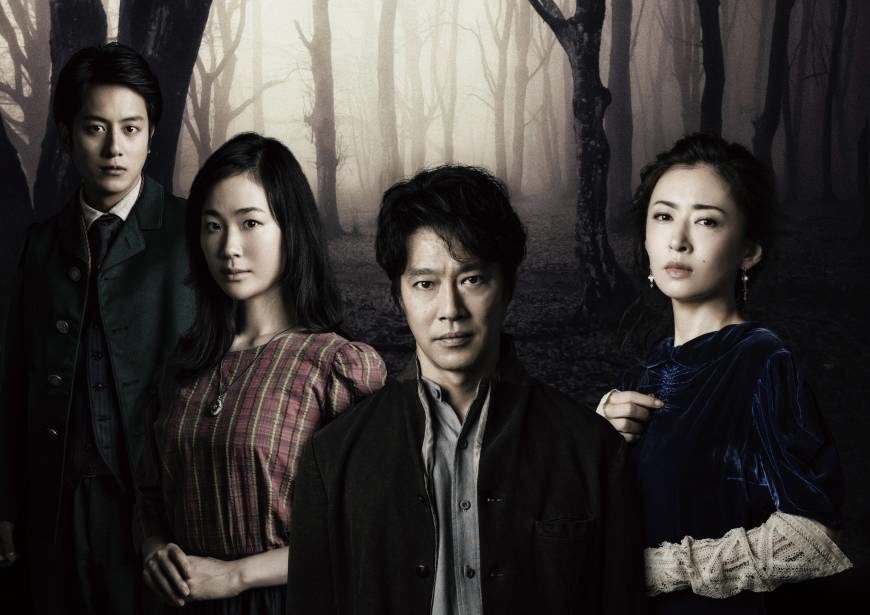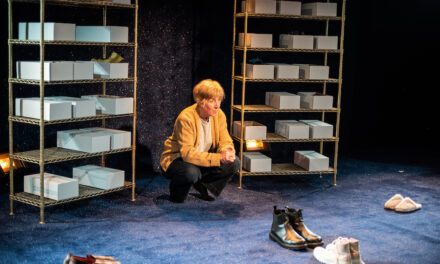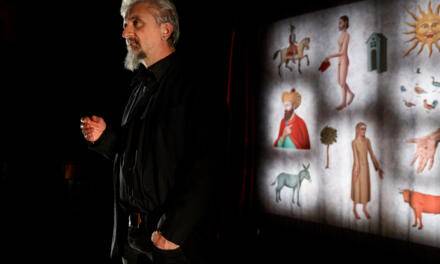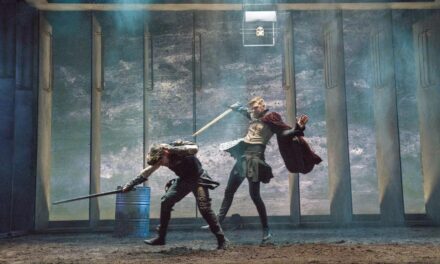“When the opportunity came to work at Theatre Cocoon in Tokyo, I was so excited about the great dramatist Yukio Ninagawa being the artistic director there,” the English director Jonathan Munby declared.
Of course, that was before Ninagawa died, age 80, in May this year. Nonetheless, speaking during a recent interview we had in London, Munby went on to say, “I was a huge fan of Ninagawa and he was a true inspiration. He had a wonderful way of combining the classical and contemporary.
“It really makes me so sad he won’t be here to see my production of The Crucible, which is one of the most important plays ever written.”
Based on a frenzy of witch trials in 1692 and ’93 in the small New England town of Salem in the Massachusetts Bay Colony — which led to 20 people being hanged largely based on unfounded and spiteful allegations — The Crucible earned its writer, the American drama luminary Arthur Miller, a Tony award in 1953 to add to his Pulitzer Prize for Death of a Salesman in 1949.
As Munby said, though, The Crucible is also regarded as “an allegory of McCarthyism,” since Miller wrote it when the United States was gripped by a frenzy of anti-communist denunciations and congressional hearings infamously led by Sen. Joseph McCarthy.
However, for this 40-year-old London-based Yorkshireman who is known on both sides of the Atlantic for his stagings of Shakespeare and other classics, as well as opera, The Crucible will be only his second production in Japan.
“Previously,” he said, “it was almost a fortuity” that he came to direct the Bard’s love tragedy Romeo and Juliet in 2012 after “the Japanese producers came to London to shop for a director, and were interested in my relationship with classical plays, with Shakespeare, and also my way of working with young actors.”
After he was hired, Munby first faced the challenge of preparing the movie and TV drama star Takeru Sato for his debut as a stage actor after he was appointed to play the role of Romeo.
To give Sato sufficient skills and confidence to carry it off on a major stage, Munby whisked him over to London for a week’s intensive drama workshop and voice coaching he arranged with professional actors and also tutors from the top-rank Guildhall School of Music and Drama.
“We did the school’s three-year training in one week!” he said with a laugh.
Since then, Munby has visited Japan several times to hold English-style acting workshops, which he feels help to compensate for this country’s paucity of drama education.
“I thought Japanese actors were very shy, very reserved, and scared of showing something of themselves,” he said. They were afraid of disappointing me and afraid of failure, and I think that was very inhibiting in terms of their work. So it took me a long time to make a breakthrough here.”
As for The Crucible, Munby said: “I will try to approach it as I would normally, forcing the Japanese actors to work from a psychological place, to work from inside out as opposed to outside in.
“I think a lot of them are very aware of techniques and form, but I work in the opposite way, from psychology.”
In terms of the play itself, Munby believes The Crucible reflects the times we are living in — that it’s a play about fear.
“I think we as a people, not just in Britain but across the world, live in fear — fear of terrorism, of economics, of the natural world and of politicians who make extraordinary decisions that we don’t believe in.
“I think this atmosphere of fear is something the politicians also use to control us.
“When I look at The Crucible, it is an entire society built on fear. The people are defined by the thing they fear most. So I think it is absolutely a play for our times.
“I am also interested in how this connects with Japanese culture,” he added — noting how a family’s standing is very important here, just as it is key to this play.
Then finally, Munby emphasized how much his production really will be a hybrid of East and West, pointing not only to himself and its Japanese cast, but to the set and costume design by his long-time colleague Mike Britten — and to the “butoh-style choreography” created by Ikuyo Kuroda for scenes in which young girls and others hysterically accuse their neighbors of witchcraft.
It’s perhaps as well that the Tokyo run finishes on the eve of All Hallows’ Eve…
This post originally appeared on The Japan Times on September 27, 2016, and has been reposted with permission.
This post was written by the author in their personal capacity.The opinions expressed in this article are the author’s own and do not reflect the view of The Theatre Times, their staff or collaborators.
This post was written by Nobuko Tanaka.
The views expressed here belong to the author and do not necessarily reflect our views and opinions.


















